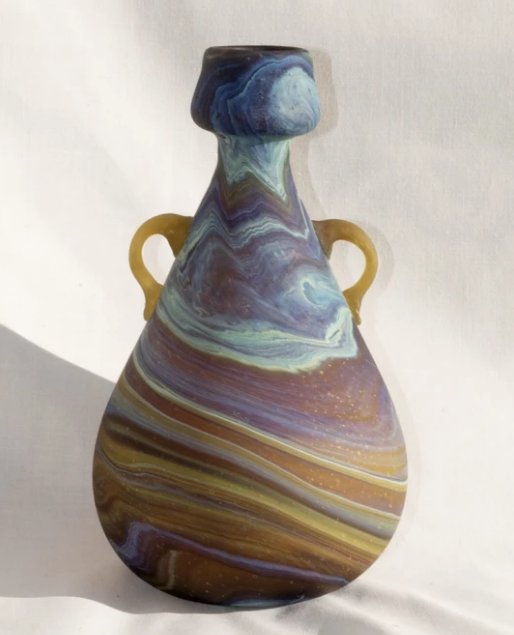- Tat London

- Sep 3, 2021
- 4 min read
Updated: Nov 29, 2023


Erandi de Silva is the editor of Loké Journal, which aims to 'examine the art of making as an inclusive, cross-cultural, and global pursuit. We offer nuanced perspectives on the complex and varied realities of international design production'. Not only being content with steering the Loké ship, she has decided to open up The Known Shop. It will concentrate on homewares, 'Whether they are contemporary or traditional, our pieces are imbued with the nuanced dialogues of design production from the ancient to the colonial to our present moment.' So you can see why I was so excited for Erandi to share her interests and passions with us.
I live in Accra, Ghana in West Africa. Aesthetically, this is a very stimulating part of the world, offering a lot to the larger design landscape. One such example is the Fante Asafo flag tradition which steeps colonial heraldry in local symbolism. In my favourite instances they reflect the wisdom, and at times the gentle humour, of African proverbs. Despite the dwindling group of Master flag makers, it is a practice worth preserving. I’m happy to see Barbara Eyeson, the British-Ghanaian Creative Director of Asafo Flags, bringing this work to the larger, global audience that it deserves.
I’ve been producing Loké Journal since 2016, because I saw a need to widen the conversations that the design world is having, by making space for a larger pool of experiences, ideas, and work. The project examines the art of making as an inclusive, cross-cultural, and global pursuit. Each issue features interviews with both leaders and newcomers from a spectrum of design backgrounds, as well as essays that record the thoughts of our community of writers.
I first encountered Industrial Designer Nifemi Marcus-Bello’s work in Accra when I visited a thrilling exhibition that he had collaborated on with the fashion designer, Kenneth Ize. The duo had revisited a traditional loom to improve its form and function. A UK-trained designer, Nifemi bases his practice in Lagos, expertly navigating local manufacturing to bring forward works that tell a story of Nigerian making. His Selah Lamp 1.0 and LM Stool are particularly eye-catching. The colours reflect their environment and the ease with which so many West Africans engage vivid hues. What brings strength to Nifemi’s work is that it reflects an understanding and sensitivity to its production context, which is an essential foundation for progressive design.
This vessel was a gift from my friend Lee Dekel who owns 100% Silk Shop in Toronto, one of those rare spaces that marries retail and community. She carries clothing and housewares that have come into being through fascinating journeys of hand-making and this piece is no different. It is a Phoenician glass vase made by a family of artisans that have been producing marbled works in the West Bank since 1890. There is something so right about a psychedelic glass galaxy in a Classical amphora form.
Recently, I have been producing some small-scale furniture pieces and objects that relate back to reading. This side table with a space for books and magazines underneath is part of the ‘Islands’ series. Made using a marquetry technique, the form’s tidy Modernist rigidity is disrupted by an all-over evocative pattern.

The King’s Palace
I lived in Rwanda for several years and one of my favourite buildings to visit there is the King’s Palace in Nyanza. This quietly stunning piece of architecture is a thoughtfully expressed thatched dwelling, made from renewable, local materials. Its considered interior includes bark cloth bedding and beautifully patterned bedshades. The rear of this building is home to a few elegant long-horned Inyambo cattle, descended from the King’s herd. Their keepers tend and sing to them, maintaining a unique tradition. I find the overall experience here to be a sophisticated reminder of the value in living life with care and positive intentions.
The artist Chris Schanck runs an energetic studio at the edge of Detroit, producing furniture that balances considered concepts with functionality. Community, process, and materiality are all important elements that find expression in his final product, resulting in design objects that have a rare depth. I enjoy that this work is imaginative, experimental, and far from demure. If all of this weren’t enough, the studio is grounded in a rare sort of inclusion that isn’t typically centred in the design world.

I had the recent pleasure of collaborating on a few experimental candle designs for Known, with the newly founded Croydon Candles. With backgrounds in the visual arts, academic research, and poetics, CC’s mark-making reflects their wisdom and experience. The two architect-inspired styles that we produced take cues from the residences of my fellow Sri Lankan countryman Geoffrey Bawa and the inimitable Luis Barragán from Mexico.

Founded in 1964 by the artist Barbara Sansoni, you could call Barefoot in Colombo an informal cultural centre of sorts. This is a place that recognizes the deep connections between history, art, and everyday life. Barefoot has long worked with female weavers to produce a large selection of hand-loomed textiles that can be bought by the meter or as ready-mades in the form of housewares and clothing, which are often rooted in traditional techniques and designs. There is an art gallery on the premises as well as a café where you can taste the island’s extraordinary lime soda. It is also home to one of my favourite design bookshops, specializing in publications that are related to Sri Lanka.
I’ve gotten to know the London-based furniture dealer Abel Sloane and his work after his partner Ruby Woodhouse gifted him a copy of Loké Journal, which got us chatting about design. His acquisitions are provocative, beautiful, and occasionally even mysterious. Abel has a playful and thoughtful contemporary perspective on twentieth-century design, which I appreciate.
Huge thank you to Erandi, To Follow Loké Journal Click Here and To See What's Going On At The Known Shop Click Here!
















Comments